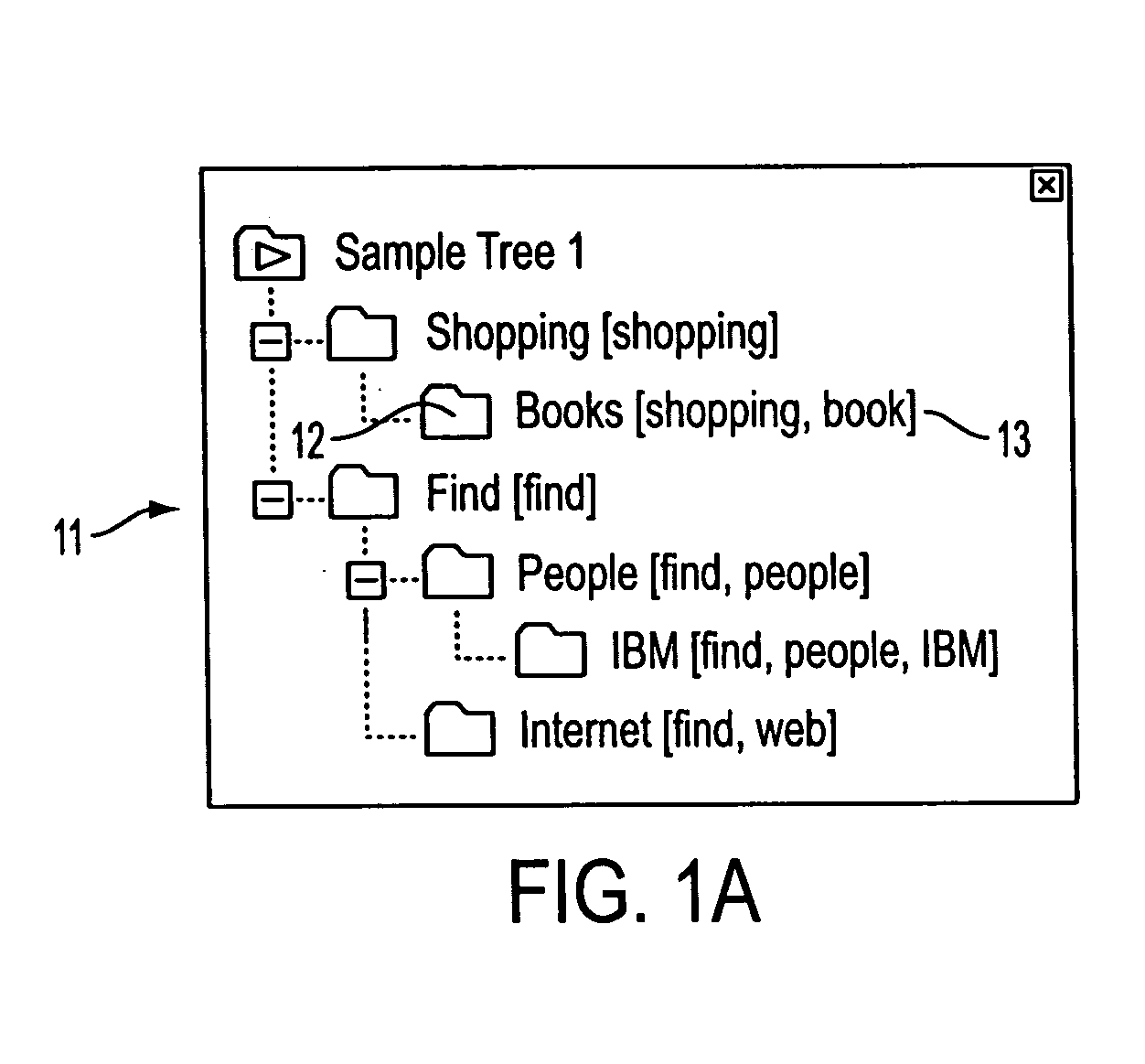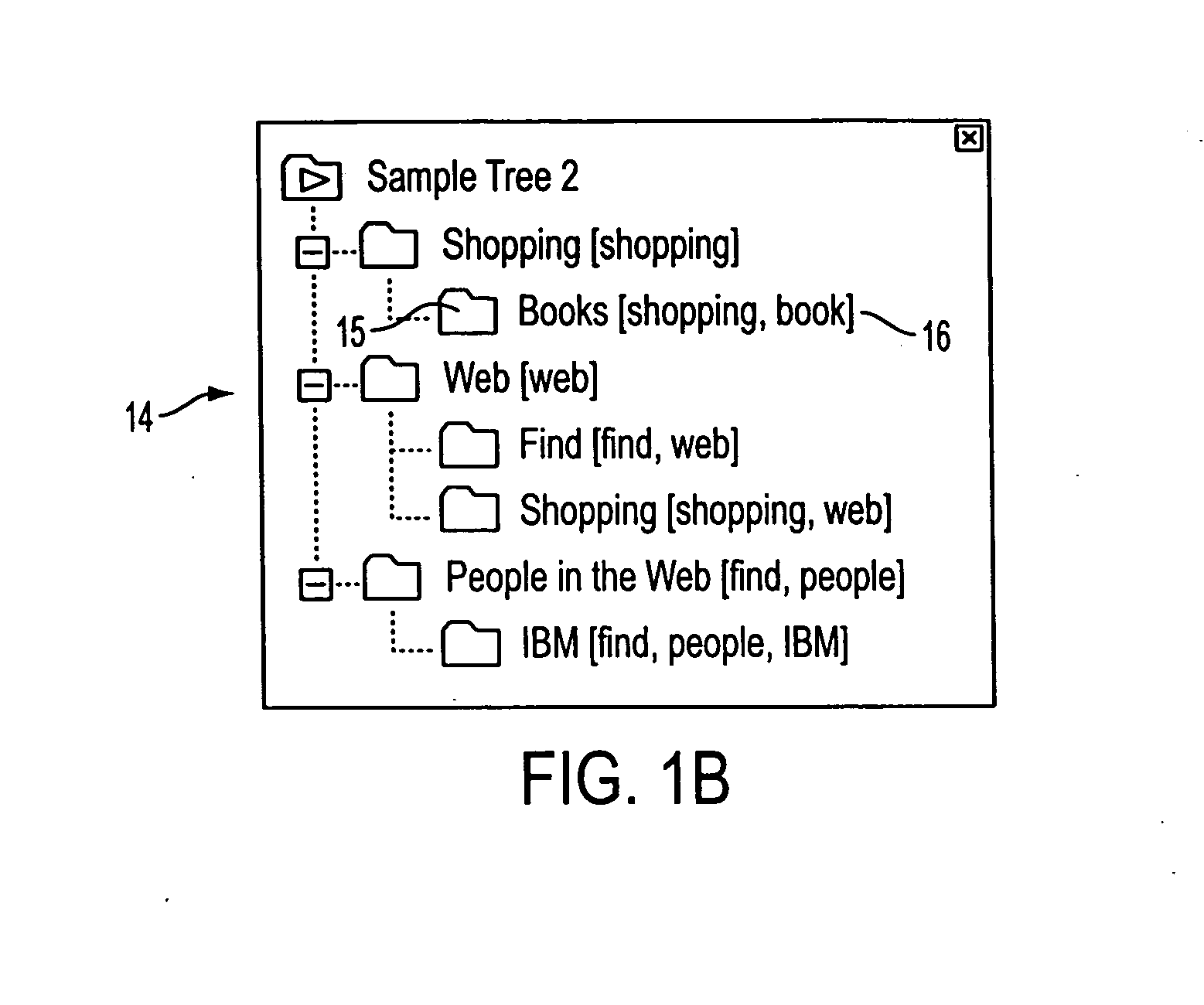Managing objects and sharing information among communities
a technology for sharing information and objects, applied in static indicating devices, memory systems, instruments, etc., can solve problems such as difficulty and time consumption, difficulty in finding their way to the same location again, and difficulty in implementing a very efficient mechanism, so as to reduce the time it takes and improve performan
- Summary
- Abstract
- Description
- Claims
- Application Information
AI Technical Summary
Benefits of technology
Problems solved by technology
Method used
Image
Examples
Embodiment Construction
Whilst, for simplicity, the discussion below pertains to a bookmark management and sharing application, the invention is by no means bound to bookmarks. Thus, bookmarks is only one out of many possible objects and accordingly other objects in addition or in lieu of the specified bookmarks, such as emails, files of various types, etc, or combination thereof.
Likewise, the description is mainly focused on tree of folders user interface, such as a Microsoft™ File Explorer like structure. Folders are only a non-limiting example of a self of containers and a tree is only a non-limiting example of arranging the set of containers.
A very popular interface for viewing bookmarks (as well as files, mail messages, etc.), is using a tree of folders, e.g. in accordance with the Microsoft file explorer user interface. In many applications, browsing the tree is a better way to look for the right bookmark, rather than doing a textual search in the database. However, organizing shared bookmarks i...
PUM
 Login to View More
Login to View More Abstract
Description
Claims
Application Information
 Login to View More
Login to View More - R&D
- Intellectual Property
- Life Sciences
- Materials
- Tech Scout
- Unparalleled Data Quality
- Higher Quality Content
- 60% Fewer Hallucinations
Browse by: Latest US Patents, China's latest patents, Technical Efficacy Thesaurus, Application Domain, Technology Topic, Popular Technical Reports.
© 2025 PatSnap. All rights reserved.Legal|Privacy policy|Modern Slavery Act Transparency Statement|Sitemap|About US| Contact US: help@patsnap.com



